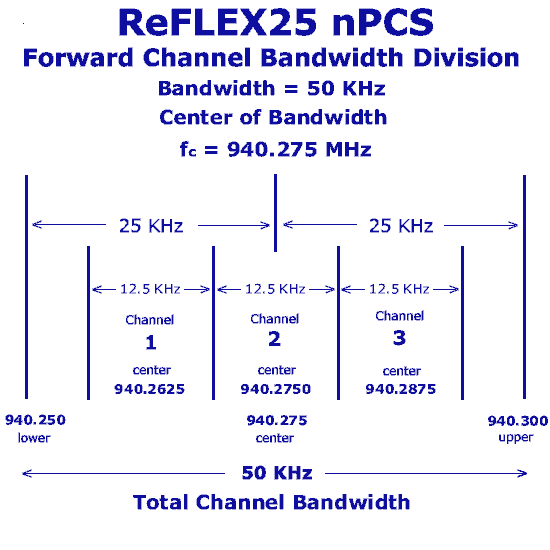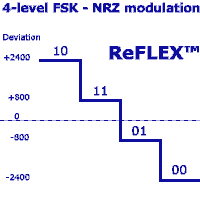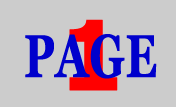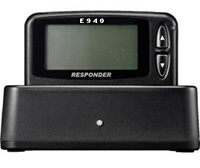 BloostonLaw Telecom Update Published by the Law Offices of Blooston, Mordkofsky, Dickens, Duffy & Prendergast, LLP [Reproduced here with the firm's permission.] www.bloostonlaw.com |
| Vol. 14, No. 43 | November 16, 2011 |
 Drexel Study Says FCC’s National Broadband Map May Not Be Accurate
A
Drexel University study suggests that
the FCC’s National Broadband Map
(NBM) may not be accurate about the availability
of broadband in the U.S. According to
Drexel, instead of disseminating FCC
Form 477 data at the ZIP code or Census
tract level, “the NBM reports provision
information at the Census block level — the
smallest geographic unit in which the
Census Bureau tabulates survey information.” While
applauding the increased level of data,
the Drexel study said that there are
limitations to such data. For example,
the study noted, “the NBM does
not include all broadband carriers or
provide an accurate portrayal of coverage.” Also,
an IDInsight study notes “a wide
variation in participation rates for
broadband providers in each state.” Drexel
said that 14 states had provider participation
rates under 60%, while 8 states had 100%
participation. Additionally, there is
the problem with “self-reporting.” Drexel said the challenge of working with more than 12.5 million data points is heightened by the fact that “developing the appropriate aggregation routines to rescale the data for econometric analysis and policy evaluation is not straightforward.” In its current form, Drexel said, while the NBM is “far from perfect, it is a good start.” It said the biggest problem is that the data is somewhat incomplete. Drexel recommended “better incentives” for information reporting. Finally, Drexel said there is “no excuse” for not reporting “pricing data,” regardless of providers’ fears about being placed at a “competitive disadvantage.” Drexel said that “marked price differentials between geographic regions are likely, particularly between when locales with more than one provider are compared against those without any measure of competition.” The NBM will be used in determining “unserved areas” for USF purposes and in other contexts. If you believe that the NBM does not accurately identify the situation in your service area, we can help you bring this to the FCC’s attention. Contact Ben Dickens, Gerry Duffy or Mary Sisak. |
 INSIDE THIS ISSUE - FCC, cable firms launch cheap Internet service for low-income families.
- NTIA releases computer home use study.
- USDA announces funding for rural broadband.
- Senate blocks resolution to disapprove Net Neutrality rules.
- FTC wants default blocking to prevent “cramming.”
- House panel launches probe of $267 million Open Range loan.
|
FCC, Cable Firms Launch Cheap Internet Service For Low-Income Families FCC Chairman Julius Genachowski announced last week that the Commission is teaming up with several large cable companies to offer low-income consumers broadband Internet access at $9.95 per month. Qualified applicants in this “Connect to Compete” program would be those low-income families that qualify for the school lunch program and who do not already have Internet access. According to the FCC, participating National Cable & Telecommunications Association (NCTA) members will offer all eligible families “two years of $9.95 + tax broadband cable Internet, with a no installation/activation fee options and no modem rental fees (with an option to purchase a $10 modem).” The FCC said the program will cost nothing to U.S. taxpayers. In addition, Microsoft will offer $250 personal computers (PCs) to qualifying families; Redemtech will make available $150 refurbished PCs; Best Buy will offer its “Geek Squad” for computer literacy training; and Morgan Stanley will establish a financing plan for PC purchases. Other organizations involved with the program include the Boys and Girls Club, Goodwill, One Economy, the National Urban league, and the NAACP, among others. Cable companies involved include Bend Cable, Bright House Networks, Cablevision, Charter, Comcast, Cox Communications, Eagle Communications, GCI, Insight, Mediacom, Sjoberg’s Cable, Suddenlink, and Time Warner Cable. The FCC says the program will launch next spring in selected areas, and go nationwide in September 2012. According to the Commission, the program includes the following: - In-kind value of more than $2.5 billion if all eligible families take offer
- On average, a 70% discount off monthly broadband services charges
- Offer covers 15 - 25 million Americans, including 10-15 million students
- Offer service area covers over 86% of the population and reaches all 50 states
- Offer is available for a three-year signup window
- Minimum speed tier of 1 Mbps
- Eligible
families must:
- (1)
have at least one student
enrolled in the Free School
Lunch Program;
- (2)
not be a current subscriber
to broadband (or have
subscribed in the last
90 days); and
- (3)
not have an overdue bill or
unreturned equipment to
the participating service
provider.
No telephone companies, including Verizon and AT&T , are involved in this program. At this time, it is not clear whether the program is geared toward urban areas only. It has come to our attention that the program may be geared toward rural areas as well, which may have a future impact on the distribution of USF for our rural clients. We are investigating this aspect and will report further if indicated. BloostonLaw contacts: Ben Dickens, Gerry Duffy, and Mary Sisak. NTIA Releases Computer Home Use Study
The
National Telecommunications and Information
Administration (NTIA) has released a study
of home computer use, titled Exploring
the Digital Nation: Computer and Internet
Use at Home. In October 2010, the U.S.
Census Bureau within the Economics and Statistics
Administration, in collaboration with NTIA,
significantly expanded the Current Population
Survey (CPS) to include new questions on computer
and Internet use. The Census Bureau surveyed
about 54,300 households, and through statistical
methods extrapolated the survey results to
represent 119.5 million American households.
The CPS data revealed that 68 percent of households
used broadband Internet access service, up
from 64 percent the previous year. Despite
this improvement, demographic and geographic
disparities demonstrate a persistent digital
divide among certain groups. For example,
rural low-income minorities’ broadband
adoption at home lagged significantly behind
that of other groups. In addition, almost
one-third of Americans are not accessing broadband
service at home. Other results include:
- Cable modem (32 percent) and DSL (23 percent) ranked as the most commonly used broadband technologies. Other technologies, including mobile broadband, fiber optics, and satellite services, accounted for a small, but growing, segment of households with broadband Internet access service.
- Dial-up use at home — the preferred form of residential Internet access through the mid-2000s — continued to decline from five percent in October 2009 to three percent one year later.
- Over three-fourths (77 percent) of households had a computer — the principal means by which households access the Internet — compared with 62 percent in 2003. Low computer use correlates with low broadband adoption rates.
- Broadband Internet adoption, as well as computer use, varied across demographic and geographic groups. Lower income families, people with less education, those with disabilities, Blacks, Hispanics, and rural residents generally lagged the national average in both broadband adoption and computer use. For example, home broadband adoption and computer use stood at only 16 percent and 27 percent, respectively, among rural households headed by a Black householder without a high school diploma. Also, households with school-age children exhibited higher broadband adoption and computer use rates than other households.
- The differences in socio-economic attributes do not entirely explain why some groups lagged in adoption. Broadband Internet adoption disparities decrease when regression analysis holds constant certain household characteristics, such as income, education, race, ethnicity, foreign-born status, household composition, disability status, or geographic location. For example, the gap with respect to broadband Internet adoption associated with disabilities decreases from 29 to six percentage points when controlling for income, education, age, and other attributes.
- The
most important reasons households without
broadband Internet or dial-up service gave
for not subscribing was:
- (1)
lack of need or interest (47 percent);
- (2)
lack of affordability (24 percent); and
- (3)
inadequate computer (15 percent).
- Households reporting affordability as the major barrier to subscribing to broadband service cited both the fixed cost of purchasing a computer and the recurring monthly subscription costs as important factors. Analysis of the expanded CPS data suggests that work, school, public libraries, and someone else’s house were all popular alternatives for Internet access among those with no home broadband Internet access service. Individuals with no home broadband Internet access service relied on locations such as public libraries (20 percent) or other people’s houses (12 percent) more frequently than those who used broadband Internet access service at home.
BloostonLaw contacts: Ben Dickens, Gerry Duffy, and Mary Sisak. USDA Announces Funding For Rural Broadband The U.S. Department of Agriculture (USDA) has announced funding for telephone utilities to expand broadband in their rural service areas across 15 states. The following list of awardees will receive $410.7 million in funding, contingent upon the recipient meeting the terms of the agreement with USDA.
Colorado:
Eastern Slope Rural Telephone Association,
Inc. — $18,725,000 will
be used to upgrade the existing fiber-to-the-node
(FTTN) network, capable of providing
modern broadband services to subscribers
in 10 exchanges.
Idaho
and Utah: Albion Telephone
Company — $17,075,000
in loan funds will be used to install
453 miles of buried fiber optic
cables throughout the proposed fiber-to-the-premises
(FTTP) system, providing nearly
60 percent of subscribers with FTTP.
Illinois:
McNabb Telephone Company — $3,700,000
in loan funds will be used to make system
improvements, including constructing
new FTTP facilities. A total of 115 miles
of buried fiber optic cable will be deployed
to improve service to subscribers. Shawnee
Telephone Company — $30,286,000
in loan funds will be used to construct
FTTP facilities, allowing Shawnee to
provide voice and data services at speeds
of up to 100 Mbps to both residences
and businesses. McDonough Telephone
Cooperative, Inc. — $15,728,000
in funds will be used to upgrade the
rural areas with fiber-to-the-home (FTTH)
technology. Approximately 766 miles of
buried fiber cable will be deployed to
provide over half of the subscribers
with access to improved broadband service.
McDonough has been serving its rural
subscribers for over 60 years.
Indiana:
Perry-Spencer Rural Telephone Cooperative,
Inc. — $29,139,000 in
loan funds have been awarded to Perry-Spencer
Rural Telephone Cooperative Inc., (PSC)
which provides telecommunications services
to nearly 6,000 subscribers over approximately
1,150 square miles in southern Indiana.
This loan will enable PSC to start the
process of designing and building FTTP
to enhance broadband services across
the service area.
Iowa:
Mediapolis Telephone Company — $13,401,000
in loan funds will be used to make system
upgrades to the transport system and
the network architecture from the existing
copper Digital Subscriber Lines (DSL)
to FTTP broadband systems. Griswold
Cooperative Telephone Company — $12,747,000
in loan funds will be used to complete
a system-wide FTTP network, enhancing
broadband service to all subscribers. La
Porte City Telephone Company — $9,867,000
in loan funds will be used to make system
improvements, including installation
of a FTTP broadband network that will
serve all of the borrower's subscribers.
A total of 297 miles of buried fiber
optic cable will be deployed, enabling
downstream data rates of up to 20 Mbps.
Kansas:
The S & T Telephone Cooperative Association — $29,814,000
will be used to implement a full FTTH
design to allow the migration to 10-20
Mbps broadband speeds to all subscribers
and to provide IPTV in the near future.
Minnesota:
Paul Bunyan Rural Telephone Cooperative — $19,749,000
in Rural Development Broadband Loan Program
funds will be used to extend Paul Bunyan's
existing FTTH network to serve the exchanges
of Park Rapids Rural and Trout Lake in
North Central Minnesota. With this extension
of their network, Paul Bunyan will be
able to provide advanced telecommunications
services to over 45,710 establishments
(households and businesses) across all
service areas. Paul Bunyan has been operating
since 1952 and has been a telecommunications
borrower with the Rural Utilities Service
(RUS) since 1953.
New
Mexico: Roosevelt County Telephone
Cooperative, Inc. — $12,358,000
will be used to deploy new equipment
and install FTTP equipment to enhance
the broadband network.
North
Dakota: BEK Communications
Cooperative — $26,746,000
in loan funds will be used to expand
an FTTH broadband system. Upon completion
of this RUS-funded project, 100
percent of BEK's subscribers will
be served by fiber. SRT
Communications, Inc. — $24,832,000
in loan funds will be used to install
2,143 miles of buried fiber optic
cable and related equipment throughout
the proposed FTTP system. The FTTP
system will be constructed in areas
outside of towns in twelve of the
borrower's twenty-six exchanges.
The service areas in the towns will
continue to be offered DSL at speeds
of at least 55 Mbps with its relatively
new copper plant. Polar
Communications Mutual Aid Corporation — $32,939,000
in loan funds will be used to expand
the Borrower's FTTP broadband system
throughout the borrower's eighteen
exchanges. The upgraded system will
help meet current and future requirements
for delivery of voice, video and
high speed data to subscribers.
Upon completion of this RUS-funded
project, 100 percent of Polar's
subscribers will be served with
broadband via various technologies.
Oklahoma:
Terral Telephone Company — $4,855,000
in loan funds will be used to convert
the existing copper network to a FTTH
system, and connect new subscribers.
The proposed FTTH deployment includes
construction of over 62 miles of fiber
plant in and around Terral, and the replacement
of the existing softswitch and power
plant. This FTTH deployment will create
nine jobs and save seven jobs.
South
Carolina: Sandhill Telephone
Cooperative, Inc. — $5,930,000
will be used to provide for system
improvements, including purchase
of a new switch.
Tennessee:
North Central Telephone Cooperative Corporation — $27,069,000
will be used to upgrade portions of North
Central's outside plant and network infrastructure
by deploying a FTTP network.
Washington:
Inland Telephone Company — $24,823,000
in loan funds will be used to expand
Inland's FTTP broadband system and connect
new subscribers. The Toledo
Telephone Co., Inc. — $18,091,000
in loan funds will be used to install
292 miles of buried fiber optic cables
and related equipment throughout the
proposed FTTP system, offering enhanced
service to all Toledo subscribers.
Wisconsin:
Union Telephone Company — $13,308,000
in loan funds will enable Union to deploy
approximately 336 miles of fiber, which
will provide approximately 60 percent
of Union's subscribers with access to
improved broadband services. Marquette-Adams
Telephone Cooperative, Inc. — $19,781,000
Marquette-Adams will use loan funds to
complete a system-wide FTTP network,
including over 370 miles of new or modified
buried fiber, providing enhanced broadband
service to all subscribers.
BloostonLaw contacts: Ben Dickens, Gerry Duffy, and Mary Sisak. SENATE BLOCKS RESOLUTION TO DISAPPROVE NET NEUTRALITY RULES: The U.S. Senate has voted 52-46 to defeat a resolution to disapprove the FCC’s “Net Neutrality” rules, which become effective on November 20. The House recently passed its own resolution, and President Obama had threatened to veto any such measure that came across his desk (BloostonLaw Telecom Update, November 9). However, the FCC’s rules still face a court challenge from several parties, including Verizon and MetroPCS. Sen. Kay Bailey Hutchinson (R-Texas), who introduced the resolution, said the rules were yet another example of how the "Obama administration's relentless imposition of new and destructive regulations . . is freezing our economy." But Senate Commerce, Science and Transportation Committee Chairman Jay Rockefeller (D-W.Va.) said the resolution was misguided. “It will add uncertainty to the economy. It will hinder small businesses dependent on fair broadband access. It will undermine innovation. It will hamper investment in digital commerce.” BloostonLaw contacts: Hal Mordkofsky, Ben Dickens, Gerry Duffy, and John Prendergast. FTC WANTS DEFAULT BLOCKING TO PREVENT “CRAMMING”: The Federal Trade Commission (FTC) has filed comments in the “cramming” proceeding currently pending before the FCC, advocating that third party billing on landline telephone bills either be banned outright OR allowed only in connection with default blocking. However, as discussed below, the FCC’s rulemaking could have adverse consequences for wireless carriers as well. “Cramming” is the practice of placing unauthorized charges on customer bills. In comments filed in 2009, the FTC had advocated a less drastic remedy to “cramming,” i.e. a strengthening of the telephone billing statement disclosure requirements for the charges. However, the FTC said, since filing its 2009 comments, a comprehensive investigation and subsequent report by the Senate Committee on Commerce, Science, and Transportation, a public workshop on cramming held by the FTC on May 11, 2011, and additional law enforcement experience have indicated that even improved telephone bill disclosures are unlikely to prevent the millions of dollars of consumer injury caused by cramming on landline telephone company bills. To effectively tackle the cramming problem – which causes harm to an estimated 15-20 million American households each year—the FTC therefore urged the FCC to ban outright or require default blocking of some or all third-party billing. The recommendation is based upon the FTC’s conclusion that abuse of the third-party billing system is prevalent and evidence of legitimate uses of the system are scarce, and that the proposed improved disclosures are unlikely to address cramming effectively. The FTC’s proposal was mirrored by State Attorneys General and State utility regulators. The FTC did not advocate that this remedy be applied to third-party charges on wireless company bills because it has not extensively examined the problem in the wireless context. However, certain State Attorneys General and State utility regulators did endorse applying either a ban or a default blocking mechanism on third-party charges on wireless bills. While the FCC is not bound by any of these recommendations, input from other government officials obviously can help mold FCC decision-making. Therefore, our wireless clients may want to submit reply comments ensuring that legitimate revenue streams from purchasing via cell phone is not in any way impaired by overly enthusiastic efforts to block cramming. Also, because of the scope of the cramming problem and the large number of regulatory and enforcement agencies charged with addressing the problem, the FTC recommended that state and federal agencies use the Consumer Sentinel Network as a central repository and shared database for cramming complaints lodged by consumers and businesses. Reply comments in this CG Docket No. 11-116 proceeding are due December 5, 2011. BloostonLaw contacts: Hal Mordkofsky, Ben Dickens, Gerry Duffy, and John Prendergast. FCC ELECTRONIC TARIFF FILING RULES BECOME EFFECTIVE NOVEMBER 17, 2011: On June 9, 2011, the Federal Communications Commission adopted a report and order requiring all tariff filers to follow the Com-mission's rules for electronic tariff filing and file using the ETFS for their tariffs, tariff revisions, Base Documents, and associated documents, including applications for special permission, and petitions and replies to petitions against tariff filings. Previously, only incumbent local exchange carriers (ILECS) were required to file electronically. As of the effective date, tariff filers will no longer be permitted to file diskette, CD-ROM and/or paper copies of tariffs and associated documents that otherwise would be filed with the Secretary, the Chief of the Pricing Policy Division of the Wireline Competition Bureau, and the Commission's commercial contractor. As a result, all tariff filers must file a copy of their currently effective tariff in the ETFS as an initial “Base Document” by January 17, 2011. We urge clients not to wait until the last minute to do this filing in order to leave plenty of time to ensure that the ETFS can accept the filing. In order to file, carriers will need to obtain an ETFS ID, which will also be used for subsequent tariff filings. The firm is also available to make the filing on your behalf, and a copy of the Commission’s instructions on how to file can be found at to following link: http://transition.fcc.gov/Daily_Releases/Daily_Business/2011/db1114/DA-11-1887A1.pdf HOUSE PANEL LAUNCHES INVESTIGATION OF $267 MILLION OPEN RANGE LOAN: Leaders of the House Energy and Commerce Committee have sent a bipartisan letter to the Rural Utilities Service (RUS) launching an investigation into the $267 million loan to Open Range Communications, made available by the 2002 Farm Bill. Open Range filed for bankruptcy on October 6, 2011. Open Range is a Greenville, Colorado-based company that planned to bring high-speed Internet access to remote rural areas in partnership with Globalstar (BloostonLaw Telecom Update, November 2). "Open Range’s bankruptcy potentially puts $73.5 million of taxpayer money at risk. In light of Open Range’s bankruptcy, the Energy and Commerce Committee requests a bipartisan briefing to explain the RUS application review process for the Open Range loan and the oversight RUS conducted to ensure taxpayer funds were used as intended,” wrote the committee leaders. Members requested RUS provide any and all documents related to Open Range’s loan application, the decision to approve the loan, subsequent developments on the loan, and additional information about the total number and amount of broadband loans provided under the 2002 and 2008 Farm Bills. Unfortunately, the Open Range failure may introduce more red tape and delay for more carefully planned and sustainable projects seeking funding from RUS. BloostonLaw contacts: Ben Dickens, Gerry Duffy, and Mary Sisak. FCC ASKED TO CLARIFY OR RECONSIDER “NET NEUTRALITY” RULES REGARDING SPECIALIZED SERVICES: Southern Company Services has a filed a petition for clarification or reconsideration regarding the FCC’s “Net Neutrality” (or “Open Internet”) rules as they apply to specialized services. Specifically, Southern urged the Commission to clarify its policies on specialized services so that enterprise customers, such as Southern, have greater assurance that they can contract for specialized services from broadband providers without risk that the Commission will impose new terms and conditions that could fundamentally alter the nature of the specialized services. Although the FCC did not define managed or specialized services in its Net Neutrality proceeding, it cited to telemedicine, smart grid, and eLearning applications as examples of specialized services that may require or benefit from enhanced quality of service rather than traditional best-effort Internet delivery, according to Southern. It added that the Commission invited comment in its Notice of Proposed Rulemaking (NPRM) on the essential distinguishing characteristics of managed or specialized services and how the Commission should define the category of managed or specialized services that would be generally exempt from the Commission’s Open Internet rules. Southern said that although the Commission raised questions during the rulemaking about whether the rules should address the provision of specialized services, the Commission declined to take action with respect to specialized services in the Open Internet Order, including, significantly, on what constitutes “specialized services.” Instead, the Commission stated that it will “exercise its authority to closely monitor and proceed incrementally with respect to specialized services, rather than adopting policies specific to such services at this time.” Southern urged the Commission to clarify, or if necessary reconsider, its policies and pronouncements in the Open Internet Order with respect to specialized services so that utilities and other enterprise customers will be able to develop contractual relationships with confidence that specialized services will not be made subject to the Open Internet rules for broadband Internet access services. Oppositions to the GN Docket No. 09-191 petition are due 15 days from the date of publication of the item in the Federal Register, and replies are due 10 days thereafter. BloostonLaw contacts: Ben Dickens, Gerry Duffy, and Mary Sisak.
SEVERAL
PARTIES SEEK REVERSAL OF FORBEARANCE
GRANTED TO VERIZON: On October
4, tw telecom inc., BT Americas Inc.,
the Ad Hoc Telecommunications Users Committee,
Computer & Communications Industry
Association, EarthLink, Inc., and Sprint
Nextel Corporation filed a petition to
reverse in part the forbearance granted
to Verizon on March 19, 2006. In particular,
the petitioners asked the FCC to reverse
the forbearance from:
(1)
general Title II economic requirements that
apply to non-dominant common carriers or local
exchange carriers (LECs);
(2)
Title II public policy requirements that
apply generally to all telecommunications
carriers; and
(3)
the Bell Operating Company (BOC)-specific
Computer Inquiry requirements to the
extent that they impose the same transmission
access and nondiscrimination requirements
that apply to all non-BOC, facilities-based
wireline carriers in their provision
of enhanced services.
The
petitioners contended that this will
restore regulatory parity between Verizon
and its similarly situated competitors
for non-TDM-based services such as Ethernet,
ATM and SONET. Comments in this WC Docket No. 11-188 proceeding are due December 20, 2011 and replies are due January 19, 2012. BloostonLaw
contacts: Ben Dickens, Gerry Duffy, and Mary
Sisak.
COMMENT SOUGHT ON SPECTRUM BRIDGE TV BANDS DATABASE SYSTEM TRIAL: The FCC’s Office of Engineering and Technology (OET) has asked for comment on the recently completed 45-day public trial of Spectrum Bridge Inc.’s database system designed to support the operation of unlicensed transmitting devices in broadcast television spectrum bands (TV bands database system). The trial allowed the public to access and test Spectrum Bridge’s database system to ensure that it correctly identifies channels that are available for unlicensed TV bands devices, properly registers facilities entitled to protection, and provides protection to authorized services and registered facilities as specified in the rules. Participants were encouraged to report any inaccuracies or other issues with any aspect of the database system to Spectrum Bridge. OET will grant final approval for Spectrum Bridge to operate its database system with certified TV bands devices once it determines that the system complies with all of the applicable rules and requirements. The public will be informed of such decision through a Public Notice. Comments in this ET Docket No. 04-186 proceeding are due November 28, and replies are due December 5. BloostonLaw contacts: Hal Mordkofsky, John Prendergast, Richard Rubino, and Cary Mitchell. PROCEDURES, DEADLINES SET FOR AUCTION 93 REGARDING FM BROADCAST CONSTRUCTION PERMITS: The FCC has established the procedures and minimum opening bid amounts for the upcoming auction of certain FM broadcast construction permits. This auction, which is designated as Auction 93, is scheduled to start on March 27, 2012. Auction 93 will offer 119 construction permits in the FM broadcast service. The construction permits to be auctioned are for 119 new FM allotments, including 17 construction permits that were offered but not sold or were defaulted upon in prior auctions. These construction permits are for vacant FM allotments, reflecting FM channels assigned to the FM Table of Allotments. The pre-auction deadlines are as follows: - Auction Tutorial Available (via Internet) ... January 3, 2012.
- Short-Form Application (FCC Form 175) Filing Window Opens ... January 3, 2012; 12:00 noon ET.
- Short-Form Application (FCC Form 175) Filing Window Deadline ... January 12, 2012; prior to 6:00 p.m. ET.
- Upfront Payments (via wire transfer) ... February 22, 2012; 6:00 p.m. ET.
- Mock Auction ... March 23, 2012.
- Auction Begins ... March 27, 2012.
BloostonLaw contacts: Hal Mordkofsky, John Prendergast, Richard Rubino, and Cary Mitchell.  This newsletter is not intended to provide legal advice. Those interested in more information should contact the firm. |



























































